Joosep Pata
Scalable neural network models and terascale datasets for particle-flow reconstruction
Sep 13, 2023Abstract:We study scalable machine learning models for full event reconstruction in high-energy electron-positron collisions based on a highly granular detector simulation. Particle-flow (PF) reconstruction can be formulated as a supervised learning task using tracks and calorimeter clusters or hits. We compare a graph neural network and kernel-based transformer and demonstrate that both avoid quadratic memory allocation and computational cost while achieving realistic PF reconstruction. We show that hyperparameter tuning on a supercomputer significantly improves the physics performance of the models. We also demonstrate that the resulting model is highly portable across hardware processors, supporting Nvidia, AMD, and Intel Habana cards. Finally, we demonstrate that the model can be trained on highly granular inputs consisting of tracks and calorimeter hits, resulting in a competitive physics performance with the baseline. Datasets and software to reproduce the studies are published following the findable, accessible, interoperable, and reusable (FAIR) principles.
Progress towards an improved particle flow algorithm at CMS with machine learning
Mar 30, 2023
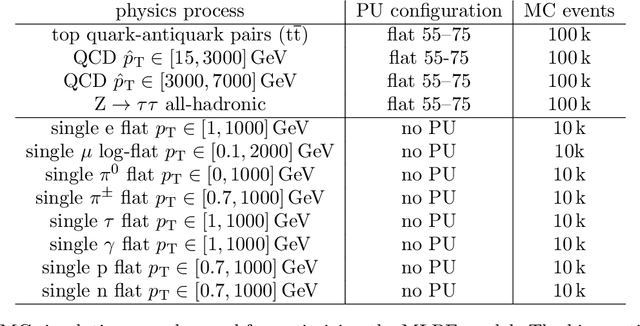
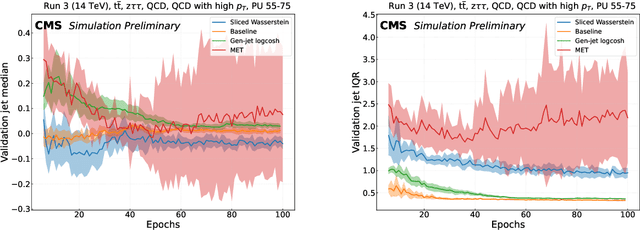
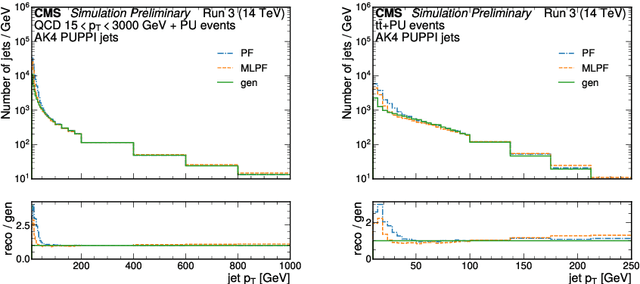
Abstract:The particle-flow (PF) algorithm, which infers particles based on tracks and calorimeter clusters, is of central importance to event reconstruction in the CMS experiment at the CERN LHC, and has been a focus of development in light of planned Phase-2 running conditions with an increased pileup and detector granularity. In recent years, the machine learned particle-flow (MLPF) algorithm, a graph neural network that performs PF reconstruction, has been explored in CMS, with the possible advantages of directly optimizing for the physical quantities of interest, being highly reconfigurable to new conditions, and being a natural fit for deployment to heterogeneous accelerators. We discuss progress in CMS towards an improved implementation of the MLPF reconstruction, now optimized using generator/simulation-level particle information as the target for the first time. This paves the way to potentially improving the detector response in terms of physical quantities of interest. We describe the simulation-based training target, progress and studies on event-based loss terms, details on the model hyperparameter tuning, as well as physics validation with respect to the current PF algorithm in terms of high-level physical quantities such as the jet and missing transverse momentum resolutions. We find that the MLPF algorithm, trained on a generator/simulator level particle information for the first time, results in broadly compatible particle and jet reconstruction performance with the baseline PF, setting the stage for improving the physics performance by additional training statistics and model tuning.
* 7 pages, 4 Figures, 1 Table
Sensitivity Estimation for Dark Matter Subhalos in Synthetic Gaia DR2 using Deep Learning
Mar 15, 2022



Abstract:The abundance of dark matter subhalos orbiting a host galaxy is a generic prediction of the cosmological framework. It is a promising way to constrain the nature of dark matter. Here we describe the challenges of detecting stars whose phase-space distribution may be perturbed by the passage of dark matter subhalos using a machine learning approach. The training data are three Milky Way-like galaxies and nine synthetic Gaia DR2 surveys derived from these. We first quantify the magnitude of the perturbations in the simulated galaxies using an anomaly detection algorithm. We also estimate the feasibility of this approach in the Gaia DR2-like catalogues by comparing the anomaly detection based approach with a supervised classification. We find that a classification algorithm optimized on about half a billion synthetic star observables exhibits mild but nonzero sensitivity. This classification-based approach is not sufficiently sensitive to pinpoint the exact locations of subhalos in the simulation, as would be expected from the very limited number of subhalos in the detectable region. The enormous size of the Gaia dataset motivates the further development of scalable and accurate computational methods that could be used to select potential regions of interest for dark matter searches to ultimately constrain the Milky Way's subhalo mass function.
Hyperparameter optimization of data-driven AI models on HPC systems
Mar 02, 2022
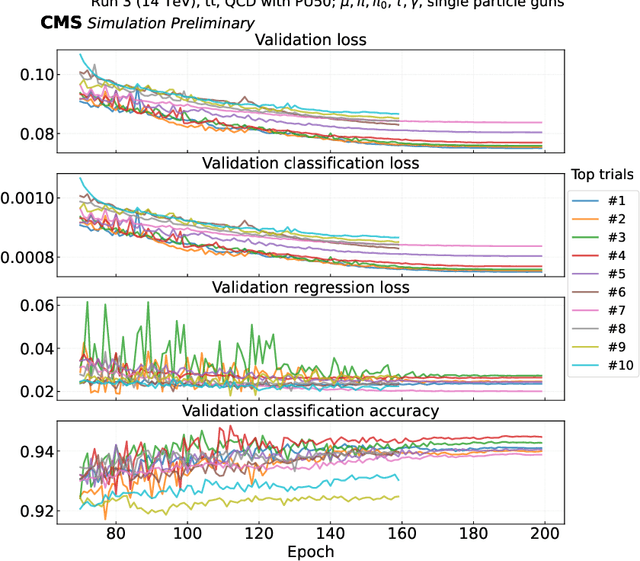
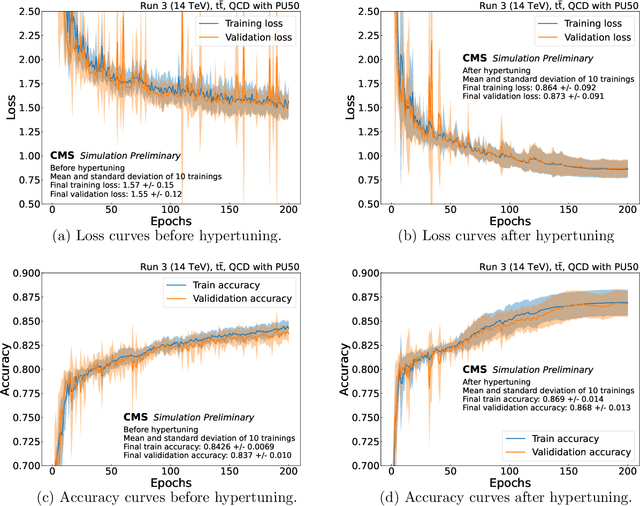
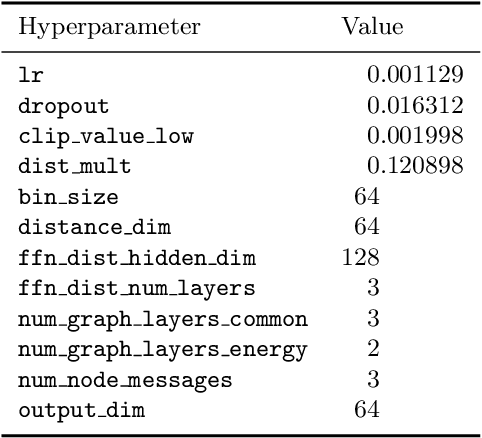
Abstract:In the European Center of Excellence in Exascale computing "Research on AI- and Simulation-Based Engineering at Exascale" (CoE RAISE), researchers develop novel, scalable AI technologies towards Exascale. This work exercises High Performance Computing resources to perform large-scale hyperparameter optimization using distributed training on multiple compute nodes. This is part of RAISE's work on data-driven use cases which leverages AI- and HPC cross-methods developed within the project. In response to the demand for parallelizable and resource efficient hyperparameter optimization methods, advanced hyperparameter search algorithms are benchmarked and compared. The evaluated algorithms, including Random Search, Hyperband and ASHA, are tested and compared in terms of both accuracy and accuracy per compute resources spent. As an example use case, a graph neural network model known as MLPF, developed for the task of Machine-Learned Particle-Flow reconstruction in High Energy Physics, acts as the base model for optimization. Results show that hyperparameter optimization significantly increased the performance of MLPF and that this would not have been possible without access to large-scale High Performance Computing resources. It is also shown that, in the case of MLPF, the ASHA algorithm in combination with Bayesian optimization gives the largest performance increase per compute resources spent out of the investigated algorithms.
Machine Learning for Particle Flow Reconstruction at CMS
Mar 01, 2022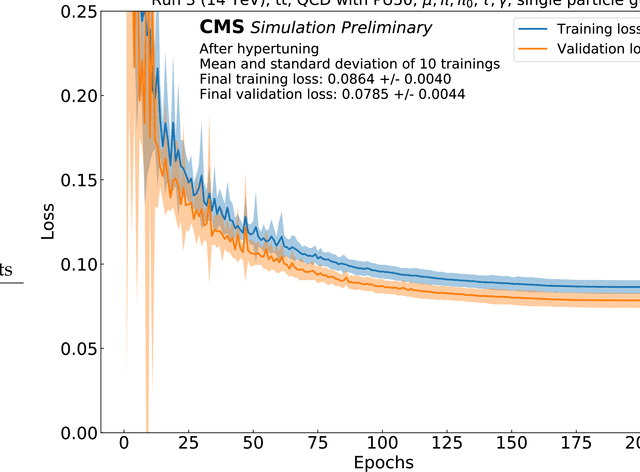
Abstract:We provide details on the implementation of a machine-learning based particle flow algorithm for CMS. The standard particle flow algorithm reconstructs stable particles based on calorimeter clusters and tracks to provide a global event reconstruction that exploits the combined information of multiple detector subsystems, leading to strong improvements for quantities such as jets and missing transverse energy. We have studied a possible evolution of particle flow towards heterogeneous computing platforms such as GPUs using a graph neural network. The machine-learned PF model reconstructs particle candidates based on the full list of tracks and calorimeter clusters in the event. For validation, we determine the physics performance directly in the CMS software framework when the proposed algorithm is interfaced with the offline reconstruction of jets and missing transverse energy. We also report the computational performance of the algorithm, which scales approximately linearly in runtime and memory usage with the input size.
Explaining machine-learned particle-flow reconstruction
Nov 24, 2021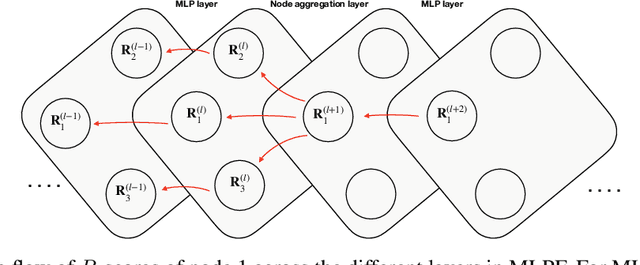
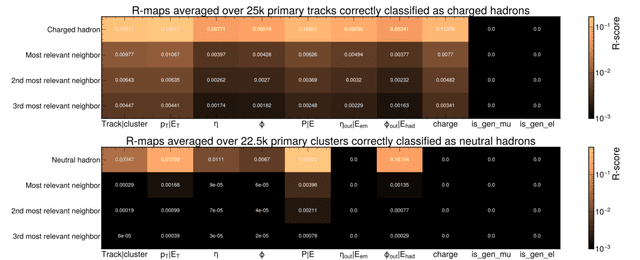
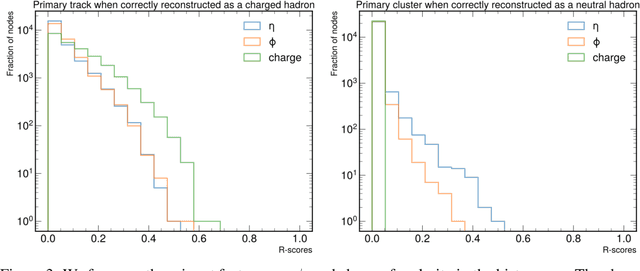
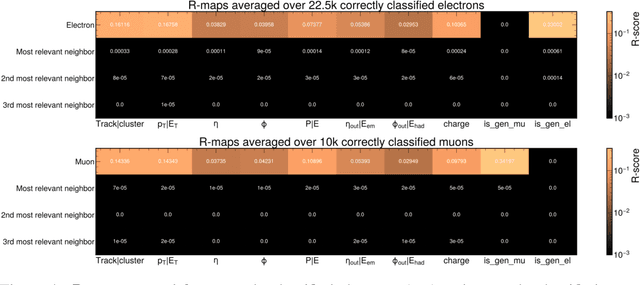
Abstract:The particle-flow (PF) algorithm is used in general-purpose particle detectors to reconstruct a comprehensive particle-level view of the collision by combining information from different subdetectors. A graph neural network (GNN) model, known as the machine-learned particle-flow (MLPF) algorithm, has been developed to substitute the rule-based PF algorithm. However, understanding the model's decision making is not straightforward, especially given the complexity of the set-to-set prediction task, dynamic graph building, and message-passing steps. In this paper, we adapt the layerwise-relevance propagation technique for GNNs and apply it to the MLPF algorithm to gauge the relevant nodes and features for its predictions. Through this process, we gain insight into the model's decision-making.
MLPF: Efficient machine-learned particle-flow reconstruction using graph neural networks
Jan 21, 2021



Abstract:In general-purpose particle detectors, the particle flow algorithm may be used to reconstruct a coherent particle-level view of the event by combining information from the calorimeters and the trackers, significantly improving the detector resolution for jets and the missing transverse momentum. In view of the planned high-luminosity upgrade of the CERN Large Hadron Collider, it is necessary to revisit existing reconstruction algorithms and ensure that both the physics and computational performance are sufficient in a high-pileup environment. Recent developments in machine learning may offer a prospect for efficient event reconstruction based on parametric models. We introduce MLPF, an end-to-end trainable machine-learned particle flow algorithm for reconstructing particle flow candidates based on parallelizable, computationally efficient, scalable graph neural networks and a multi-task objective. We report the physics and computational performance of the MLPF algorithm on on a synthetic dataset of ttbar events in HL-LHC running conditions, including the simulation of multiple interaction effects, and discuss potential next steps and considerations towards ML-based reconstruction in a general purpose particle detector.
 Add to Chrome
Add to Chrome Add to Firefox
Add to Firefox Add to Edge
Add to Edge